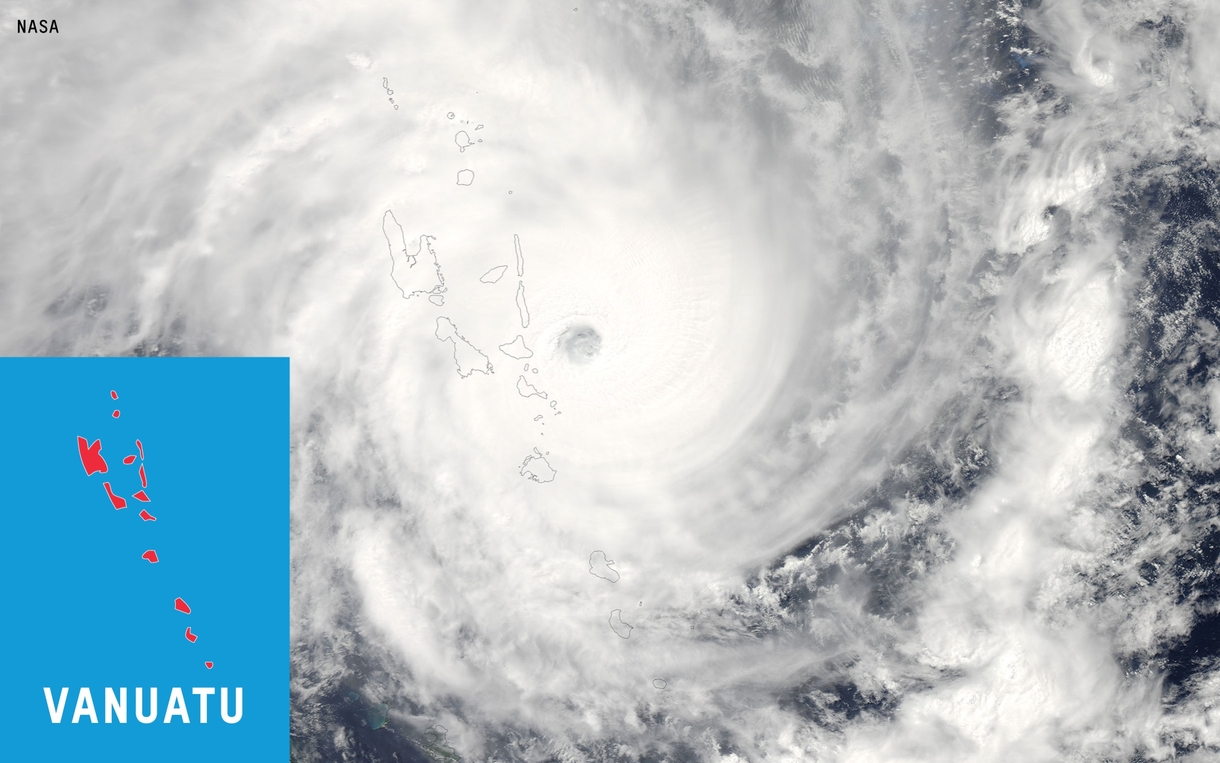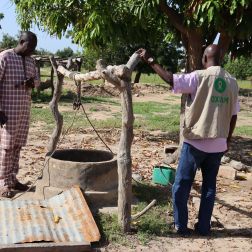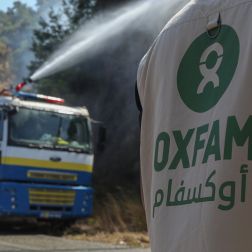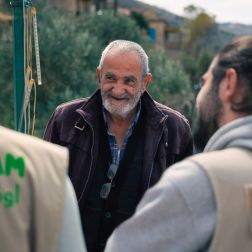- 3 mins read time
- Published: 14th March 2015
Cyclone Pam leaves ‘unprecedented disaster' in Vanuatu

Stories of devastation emerge from Oxfam staffers.
Cyclone Pam, possibly one of the worst ever seen in the Pacific region, has now passed over the island nation of Vanuatu, and reports are emerging of the devastation left in its wake as Oxfam prepares to launch an emergency response.
Packing winds of up to 160 miles per hour, the storm slammed directly into Port Vila, Vanuatu’s capital on the island of Efate, where about 65,000 people live. Oxfam staffers there are reporting the complete destruction of homes: Winds have uprooted trees three stories tall, and in some of the smaller communities, barely any houses are left standing. Power and water have been knocked out and people are still not able to move around freely. “The scale of this disaster is unprecedented in this country and the proud people of Vanuatu are going to need a lot of help to rebuild their homes and their lives,” said Colin Collett van Rooyen, Oxfam’s Vanuatu country director. He said residents have told him that they have never seen a cyclone of this intensity and were scared about the devastation that will likely unfold as emergency teams make their way into hard-to-reach areas.
Slightly smaller than Northern Ireland, Vanuatu is a Y-shaped chain of four main islands and 80 smaller ones made up mostly of mountains with narrow coastal plains. Though many of the islands are uninhabited, the total population of the country is estimated to be close to 267,000 - that's around twice the population of Cork city.
Port Vila, the capital, has been named in the Natural Hazards Risk Atlas as the city most exposed to natural disasters in the world because of the risks it faces from earthquakes, tsunamis, flooding, and cyclones like Pam.
Wake-up call for disaster risk reduction
For the president of Vanuatu, the terrible reality of those risks reportedly brought him close to tears as he delivered his opening statement Saturday at the World Conference on Disaster Risk Reduction in Sendai, Japan. The event is aimed at tackling the devastating impacts of disasters. “I speak to you today with a heart that is so heavy,” said the president, Baldwin Lonsdale. “I stand to ask you to give a lending hand to responding to this calamity that has struck us.” Ben Murphy, the humanitarian advocacy lead for Oxfam Australia who is attending the conference, said Lonsdale’s words are a wake-up call for the international community which is not doing enough to help reduce the risk of disasters like this and the impact they have on the world’s most vulnerable people. “With Cyclone Pam and Typhoon Haiyan scale events likely to increase in severity, including due to the effects of climate change, current disaster risk reduction, preparedness, and response capacities from the local to the national and international levels will increasingly be pushed to the breaking point in the future,” said Murphy. “That’s why delegations meeting in Sendai need to have President Lonsdale’s words ringing in their ears as they negotiate new international framework on disaster risk reduction.”
Oxfam in Vanuatu
Oxfam has been working on disaster preparedness at both the local and national level in Vanuatu for the past four years. We have been funding communities to build cyclone-proof classrooms and coordinating the Vanuatu humanitarian team while working closely with governments and donor agencies to strengthen disaster preparedness across the country. Following disasters like Cyclone Pam, Oxfam’s first step is to assess where the greatest needs are and then make determinations about shelter, clean water, sanitation, and food supplies. The Vanuatu Humanitarian Team, coordinated by Oxfam, is now in action. As we learn more, we will continue to provide updates on the situation.




